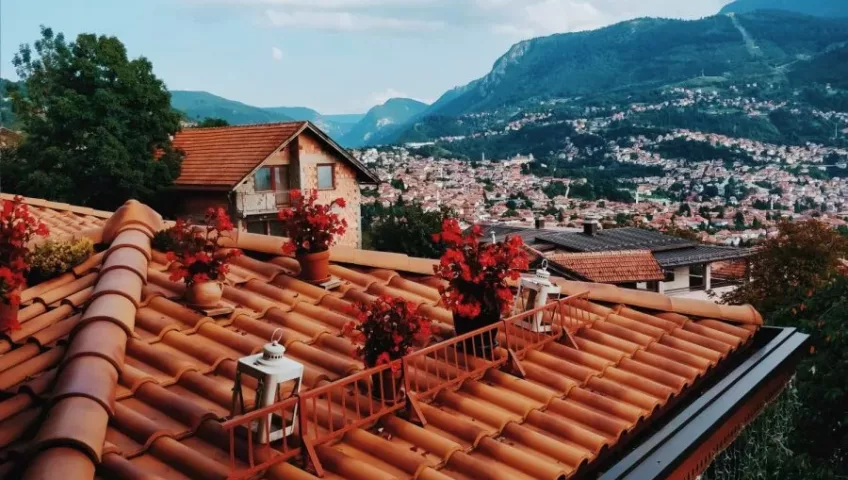The environment is in danger, and more peoples are becoming aware that the danger is very real and that they need to do something about it. Human beings have contributed to global warming, freak weather occurrences, and the scarcity of natural resources. How, then, can a roof help save the environment? As it turns out, the answer lies in multiple design innovations. Environmentally friendly home building is crucial to house the ever-growing global population without leaving too damaging a footprint.
Roofs are essential for insulating homes, and are prime real estate for power production, and harvesting water. Everything from dirt to a state-of-the-art solar cell can be utilized in creating a green roof. Here are some of how innovative design is helping homeowners become more environmentally friendly.
Power Generation
As well as keeping you warm and dry, your roof can reduce your dependence on environmentally unfriendly mains power. The roof is a perfect place to install solar power cells. These cells change light into power using a process known as photovoltaic conversion. The roof of a house is almost always the part of a property most exposed to sunlight at all times.
Financial incentives for the installation of solar panels are often included as part of green home initiatives across the country. These initiatives are a way in which councils and other local authorities can make it more likely that they can reach sustainability goals while also provoking investment in green industries.
As well as being a great venue for solar panels, a roof is a great place to install wind turbines. You will not be able to power an entire house using commercially available wind turbines, but you can use them to power boilers or charge appliances.
Insulation
Heating a house is a major use of energy. Whether you are using electricity, gas or coal, and wood to heat your home, the result is usually the same: emissions. Heat rises, which means that traditionally a great deal of artificially generated heat simply escapes from the top of a house through the roof. According to the Energy Saving Trust, a full quarter of all heat is lost through an uninsulated home roof.
Modern insulated roofing materials and good quality construction can help alleviate this – ensuring that a homeowner needs to use less energy to heat the house and keep it warm. Insulating a roof can also help save a whole wad of cash. Heating a home is expensive, and using less heating obviously reduces your bills.
Heat Reflection
If you live in a hot climate, air conditioning your home is likely to be just as environmentally damaging as heating a home in the cold is. Roofs can be constructed in several ways that reflect sunlight, drastically reducing how hot a building becomes under the sun. The simplest method of doing this is with paint. Painting a roof white or tan is a proven method of reducing heat inside a home without using air conditioning units.
In hot zones like California and India, studies have found that painting roofs white reduced temperatures inside by around 30 degrees Celsius. For this reason, you will often see lightly colored roofs in the Mediterranean or the Middle East, where temperatures are regularly very high.
Water Harvesting
Water waste is extremely environmentally damaging. One way to reduce the amount of water waste in a household is to collect and filter rainwater. Most roofs are inclined and feature gutters. This makes them absolutely perfect for harvesting rainwater. Rainwater sumps and filters are relatively inexpensive and can be attached to your guttering with very little effort. Water distribution uses a great deal of energy, contributing to climate change. Water scarcity is also contributing to the spread of deserts, which in turn eliminates the plants that absorb carbon in the air.
The Living Roof
Living roofs are absolutely stunning to look at, as well as being environmentally friendly. Popular for years in the north of Norway, these roofs are making a big splash worldwide. Essentially, a living roof is a regular roof covered with a layer of soil and a living, changing plant covering. Grass is the most popular plant used by far, but some innovators have experimented with using other living materials. The soil and plant matter of a living roof provides great insulation that only improves with time, is not made of materials that damage the earth, and help (in a small way) to absorb Carbon and produce Oxygen.

Write a Comment